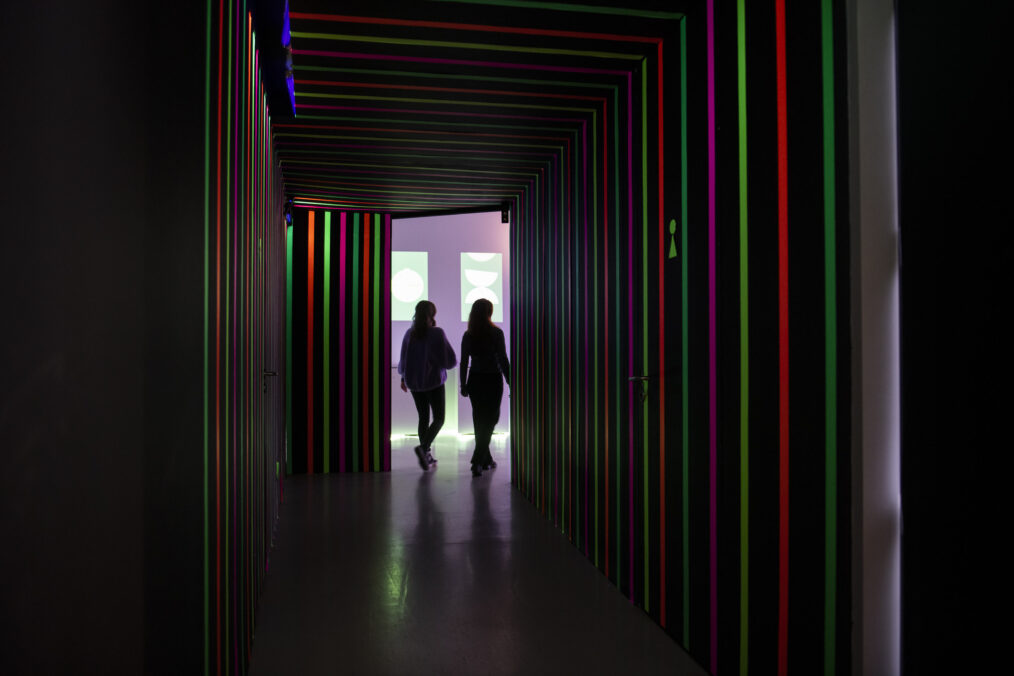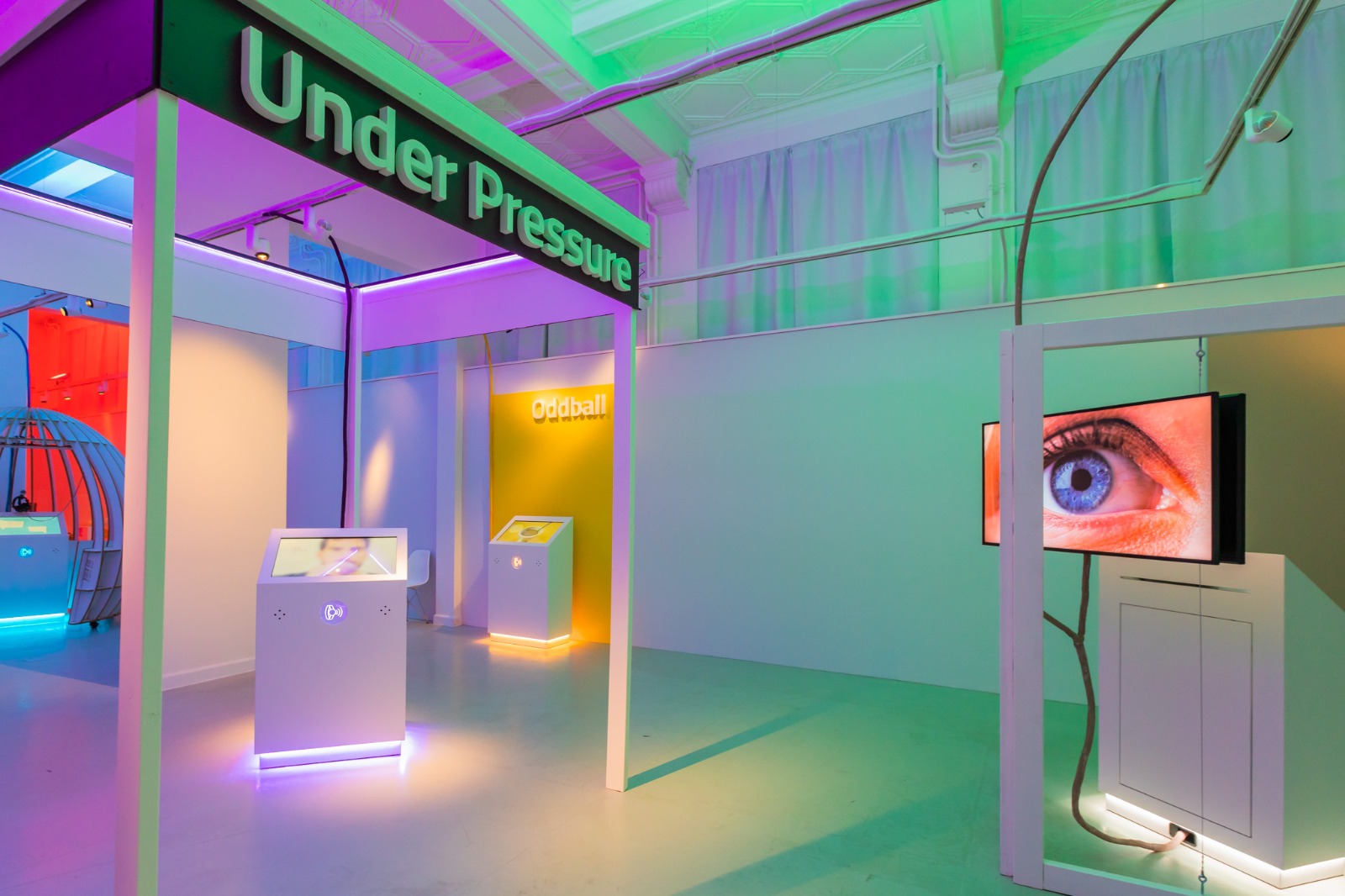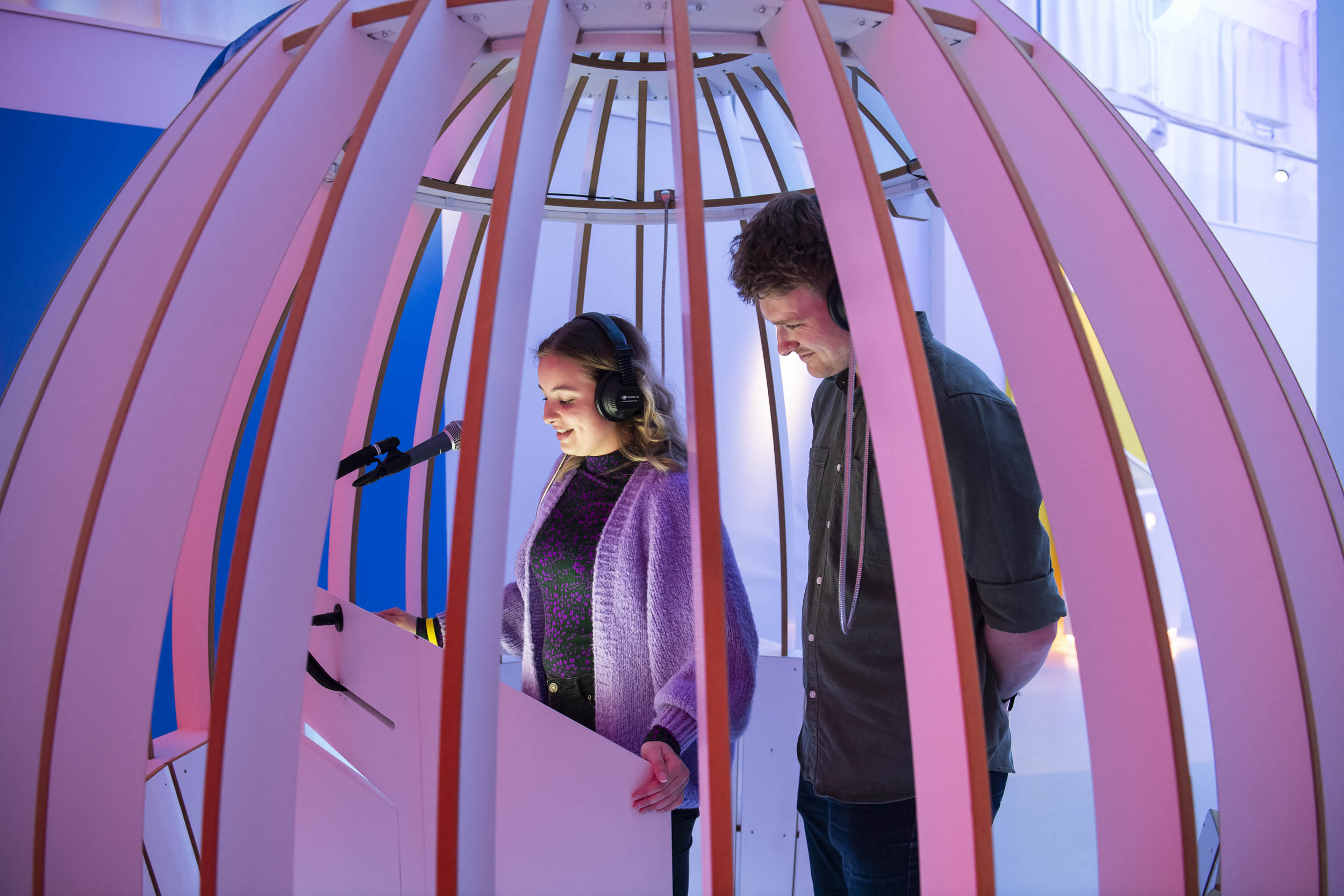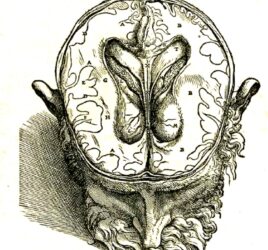
Learning about time in the University Museum
Academics should get out from their ‘Ivory Tower’, and invest more into bringing research to the public. Certainly, this critique is a sting felt by those working in cognitive neuroscience: the majority of our field relies on data acquired with repetitive, highly controlled experimental setups. These allow researchers to test fundamental models of how human cognition and the brain work, but are typically seen as artificial and far-removed from the real world.
UoG Cognitive Neuroscientist Hedderik van Rijn obtained a VICI-grant to study such a question: How does the brain keep track of time? The title of the grant, “Timing in the real World”, held a two-fold promise: On the one hand, to investigate models that can apply to daily life tasks outside the lab, and on the other hand, to focus on outreach and bringing the ideas obtained in the lab to the masses. This second promise has now culminated into something unique: On April 14th, the University Museum officially opened the doors to ‘Time will tell’, an interactive exhibition which introduces visitors to the world of (research on) time perception.
I am interviewing three of the PhD students who helped put it together: Joost de Jong, Robbert van der Mijn, and Josh Salet.
All this work, – the museum exhibition, but also your PhD projects – revolves around the question of how the brain processes time. What interests you about this topic?
Joost: Time forms an abstract philosophical puzzle, but it’s also an intimate part of our everyday lives. Physicists have argued that what we call time may not actually exist, but as humans we still feel that time flies or crawls, or that we are running out of it. The big question for me is: if our perception of time is so different from ‘physical time’, then what are we perceiving, exactly? What is our brain actually tracking, if not ‘physical time’?
Josh: What makes me so fascinated about time is that it is part of everything we do and experience. Everything we do plays out in time. A popular view in cognitive neuropsychology is to conceptualize the brain as a predictive machine that anticipates what happens next. Making predictions about what will happen also means predicting when it happens. In order to know what ‘when’ actually means, we need a sense of time.
Robbert: I’m interested in how what is happening all around us affects timing and timed behavior. The way we experience time is different when we are driving, playing a game, or when there are risks involved when we get the timing of our actions wrong. Does that also alter ‘timed behavior’ under these conditions? And vice versa, can we still keep track of time when we are distracted by doing our daily tasks?
These sound like pretty abstract scientific concepts! How does the exhibition make these things tangible?
Joost: One of the most interesting puzzles is that your brain takes some time to process information that reaches the senses. So when you perceive a flash of light, you’re actually perceiving a flash of light that happened approximately a tenth of a second ago. How does the brain deal with the fact that it is always one step behind what’s actually happening? Actually, it seems that the brain is constantly predicting what will happen, in order to ‘keep up’ with the present. One of the installations in our exhibition sheds light on this interesting puzzle.
Josh: Indeed, the role of time in making predictions is a prominent aspect of the exhibition. We have a ‘Whac-a-Mole’ installation, based on the famous arcade game. This is inspired by one of my experiments, where we test how the brain deals with hidden temporal regularities. It turns out that – completely outside of awareness – your brain makes predictions about the timing of upcoming moles, in order to be on time to ‘whack’ them.
Robbert: One installation in the museum targets our ‘timing under risk’-research, and asks how people adjust their behavior based on their timing ability. Are people aware of how accurate they can perceive time? And if so, do they use that to optimally weight the risks of being too early or too late?
Are you actually collecting data from these installations? How will you use those data?
Robbert: That’s exactly how this exhibition makes for such a unique setup: it brings the concepts behind these experiments to the public, but at the same time it also makes the audience part of academic research. That allows us to test these questions in a much broader sample than usual: the majority of research in our field is based on data obtained from university students. Several years ago, Hedderik and I developed a program about time perception to be used in the classrooms of elementary schools. It was amazing to see how some of the ideas we have about time perception don’t always generalize to these younger children. Now, we have the opportunity to test our ideas in an even wider sample: across a very wide audience of museum visitors, young and old.
Joost: We will collect data from all visitors as they interact with the installations. We anonymize the data, but we do have access to some demographic data. With those data, we can answer questions like ‘does time speed up as we grow older?’
Is it true that Psychology research on time perception in Groningen goes back a very long time? Is this also part of the museum exhibition?
Joost: When we started looking into the history of time perception research in Groningen, we found that it actually dates back all the way to the very founder of Experimental Psychology, Gerard Heymans. In 1914, he performed a series of experiments using a so-called ‘Time-sense apparatus’, which is on display in the museum. All the data he collected with his students is still in the Groninger Archives, and we are in the process of digitizing and re-analyzing his data. We hope to get a better understanding of what Heymans found out about our sense of time, and how that compares to present-day findings.
What would be, in your view, the main reason why people should definitely go visit the exhibition?
Robbert: Time perception is one of these things that you don’t usually think about: it happens automatically, and we take for granted that we use it constantly to guide us through life. The different installations in this exhibition make you aware of how important this ever-present sense of time is, and shed light on how researchers use experiments to expose how the inner clock really works.
Josh: If you think about time, you typically think about objective ‘clock time’. But as you will hopefully learn from the exhibition, your inner-time is actually very different and more flexible than clock time. According to some philosophers, the distinction between clock time and inner time is important: While clock time often rushes and stresses us, for example ‘time is running out’ or a ‘race against the clock’, inner time forms the basis of being, creativity, and reflection. Hopefully, the exhibition makes you (re)appreciate your inner-time!
Joost: I think we’ve covered many fascinating topics you can learn about in this exhibition. But the main reason to visit: it’s great fun!
The exhibition “Time will Tell” is ongoing in the University Museum, at least until December 2022.
Oude Kijk in Het Jatstraat 7A, open daily from 12:00-17:00 except on Mondays.





